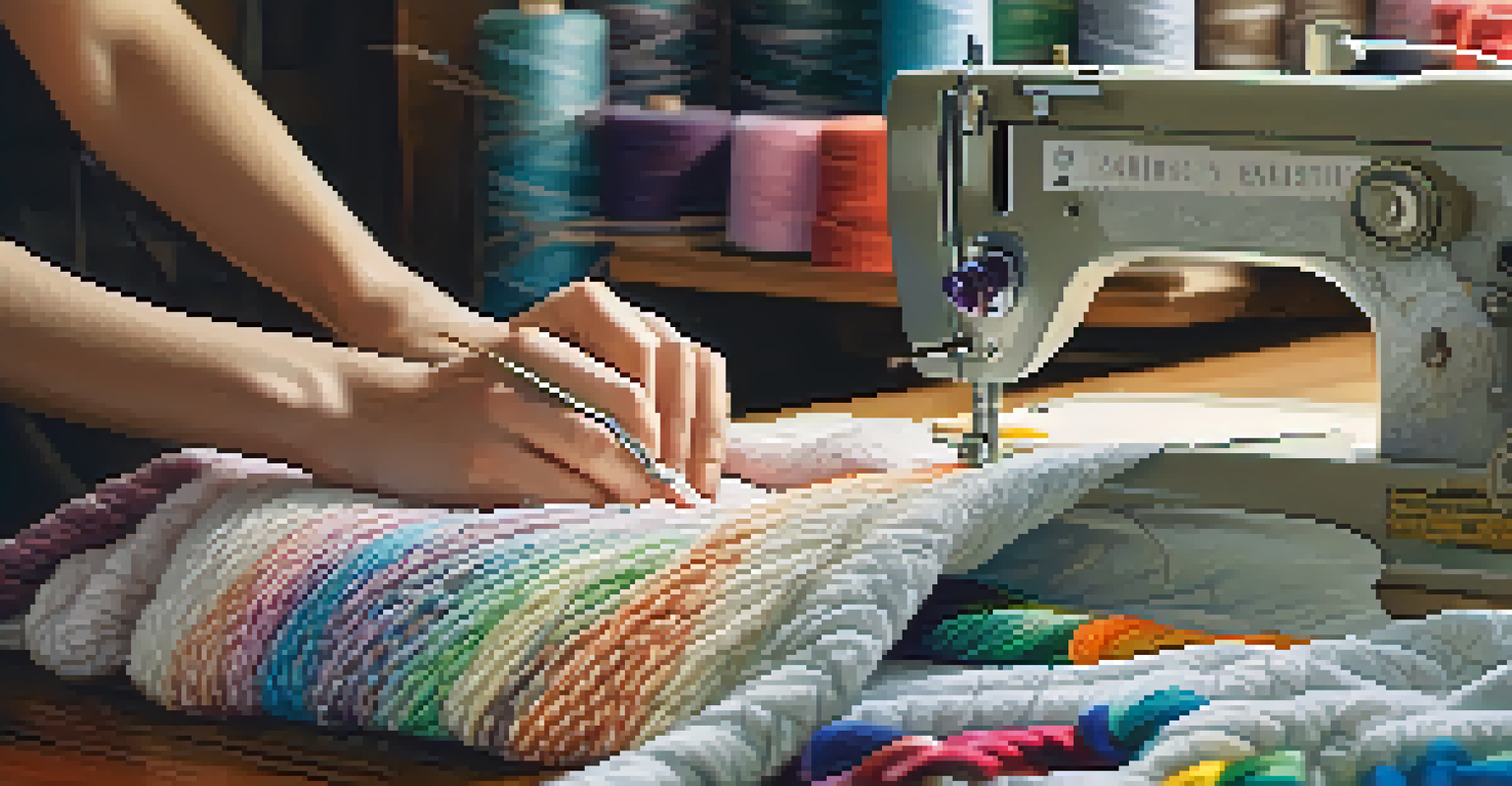Sustainability in Fashion: The Role of Social Media Awareness

The Rise of Sustainability in Fashion
In recent years, sustainability has transitioned from a buzzword to a crucial element in the fashion industry. Consumers are becoming more aware of the environmental impact of their clothing choices, prompting brands to rethink their practices. From eco-friendly materials to ethical labor, sustainability is now at the forefront of many fashion conversations.
Fashion is the armor to survive the reality of everyday life.
This shift is largely driven by the growing demand for transparency and accountability from consumers. Shoppers want to know where their clothes come from and how they affect the planet. This desire for knowledge is reshaping the fashion landscape, leading to a newfound emphasis on sustainable practices.
As a result, many brands are adopting sustainable practices not just as a marketing strategy but as a core principle. This change is evident in everything from sourcing materials to manufacturing processes, demonstrating a genuine commitment to reducing their environmental footprint.
Social Media's Influence on Consumer Behavior
Social media platforms have revolutionized the way consumers interact with fashion brands. With just a few clicks, users can access a wealth of information about brands' sustainability practices, allowing them to make informed choices. This accessibility empowers consumers to hold brands accountable for their environmental and ethical standards.

Platforms like Instagram and TikTok have become hotspots for sustainable fashion advocates, who share tips, reviews, and stories that resonate with followers. These influencers often showcase their own sustainable fashion choices, making eco-friendly options more appealing and relatable. Their engaging content can inspire others to rethink their purchasing habits.
Sustainability Drives Fashion Choices
Consumers are increasingly prioritizing sustainable practices, pushing brands to adopt eco-friendly materials and ethical labor.
Moreover, social media campaigns can amplify important messages, spreading awareness about issues like fast fashion and textile waste. When consumers see trending hashtags like #SustainableFashion or #EcoChic, they are more likely to engage with and support brands that align with these values.
The Power of Influencers in Promoting Sustainability
Influencers play a pivotal role in shaping the narrative around sustainable fashion. Their ability to reach wide audiences makes them key players in promoting eco-friendly brands and practices. When a popular influencer showcases a sustainable outfit, it not only garners attention but also encourages followers to consider similar choices.
Sustainability is no longer about doing less harm. It’s about doing more good.
These influencers often share personal journeys of transitioning to sustainable fashion, making the movement feel more attainable. Their relatable storytelling allows followers to connect with the cause on a deeper level. This personal touch can inspire meaningful change in consumer behavior.
Additionally, influencers often collaborate with brands to create capsules or collections focused on sustainability. These partnerships not only highlight the brand's commitment but also provide followers with tangible options for incorporating eco-friendly pieces into their wardrobes.
The Role of User-Generated Content in Awareness
User-generated content (UGC) has become a powerful tool in promoting sustainable fashion. When consumers share their own sustainable outfits or thrift finds on social media, they create a community that celebrates conscious choices. This organic content often feels more authentic than traditional brand advertising.
UGC encourages others to join the movement, as people are more likely to trust recommendations from their peers. Seeing friends and family embrace sustainable fashion can spark curiosity and inspire changes in buying habits. The ripple effect of this shared content can lead to widespread awareness and action.
Social Media Fuels Sustainable Trends
Platforms like Instagram and TikTok empower consumers to hold brands accountable and promote sustainable fashion through influencer content.
Moreover, many brands actively encourage their customers to share their sustainable looks, often featuring UGC on their own platforms. This not only strengthens brand loyalty but also creates a sense of community among consumers who prioritize sustainability.
Challenges in the Digital Age of Sustainable Fashion
Despite the progress, challenges still exist in the realm of sustainable fashion and social media. One significant issue is the prevalence of greenwashing, where brands falsely claim to be eco-friendly. Consumers must remain vigilant and discerning, as not all sustainable claims are backed by genuine practices.
Additionally, the fast-paced nature of social media can lead to trends that overshadow sustainability. For instance, while a new 'eco-friendly' trend may go viral, it often lacks the depth of lasting change. This can confuse consumers about what it truly means to be sustainable.
Moreover, the pressure to constantly showcase new outfits can encourage overconsumption, counteracting the principles of sustainability. Striking a balance between sharing fashion and promoting sustainability is an ongoing challenge that requires awareness and commitment from both brands and consumers.
The Intersection of Fashion, Sustainability, and Community
Building a community around sustainable fashion is crucial for driving meaningful change. Social media provides an ideal platform for individuals to connect, share ideas, and support each other in their sustainable journeys. This sense of belonging can motivate consumers to embrace eco-friendly practices.
Online forums and groups dedicated to sustainable fashion allow individuals to exchange tips, recommend brands, and discuss challenges. This collaborative environment fosters a culture of sustainability where participants feel empowered to make informed choices and inspire others.
Community Boosts Sustainable Fashion
Building a community around sustainable fashion encourages shared experiences and support, fostering a culture of conscious consumerism.
Additionally, brands that actively engage with their communities often see a loyal customer base. By prioritizing transparency and open communication, these brands create lasting relationships with consumers who value their commitment to sustainability.
Looking Ahead: The Future of Sustainable Fashion and Social Media
As we look to the future, the intersection of sustainable fashion and social media is poised for growth. With increasing awareness and demand for eco-friendly practices, brands will likely continue to innovate and adopt sustainable strategies. This evolution will create more opportunities for consumers to make conscious choices.
Furthermore, social media will play a crucial role in shaping the dialogue around sustainability. As platforms evolve, new formats and features will emerge, allowing for deeper storytelling and engagement. This will enable brands and consumers alike to share their sustainability journeys more effectively.

Ultimately, the ongoing collaboration between fashion, sustainability, and social media holds great potential for positive change. Together, they can inspire a movement that not only transforms the industry but also encourages individuals to embrace a more sustainable lifestyle.